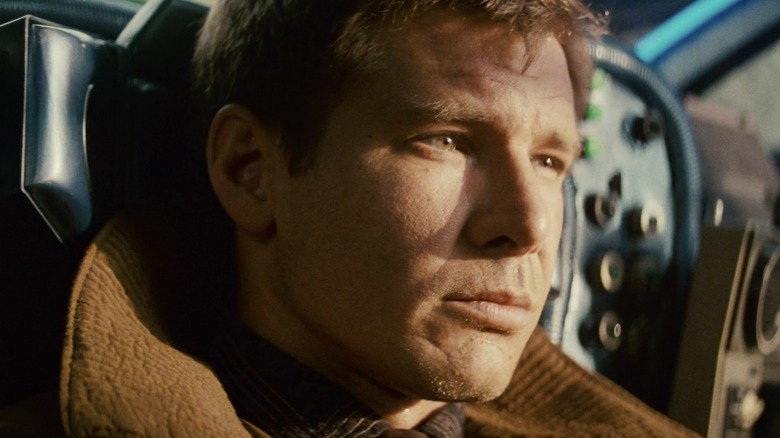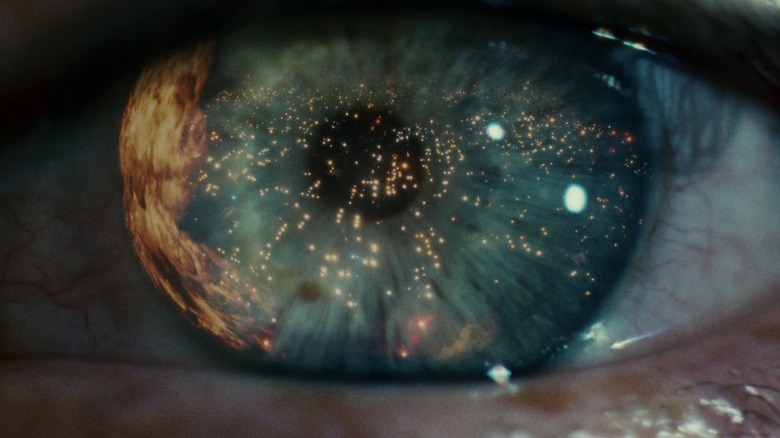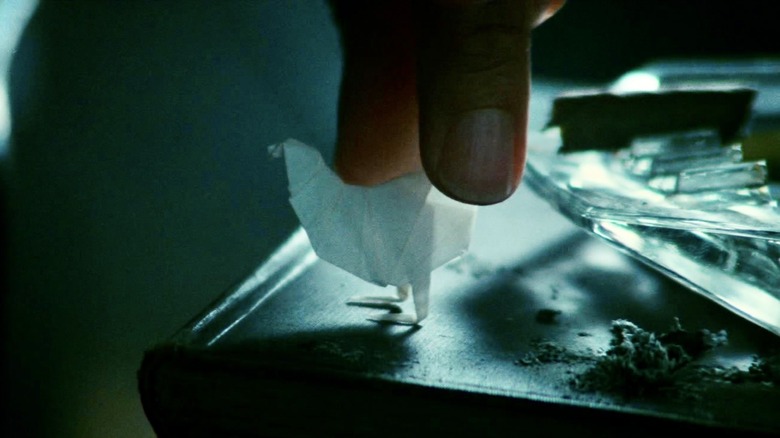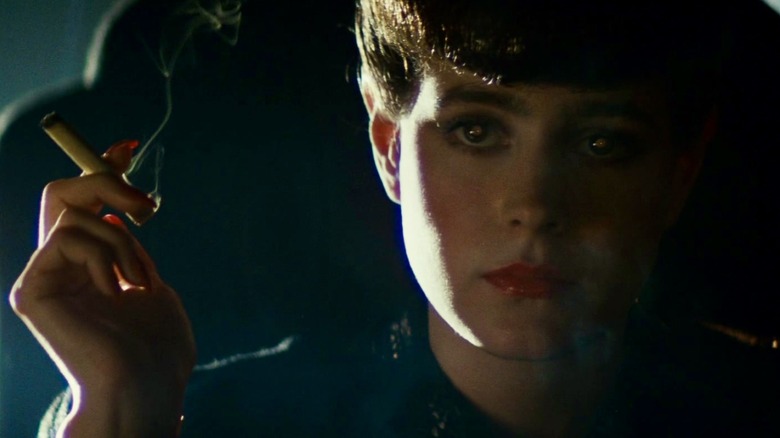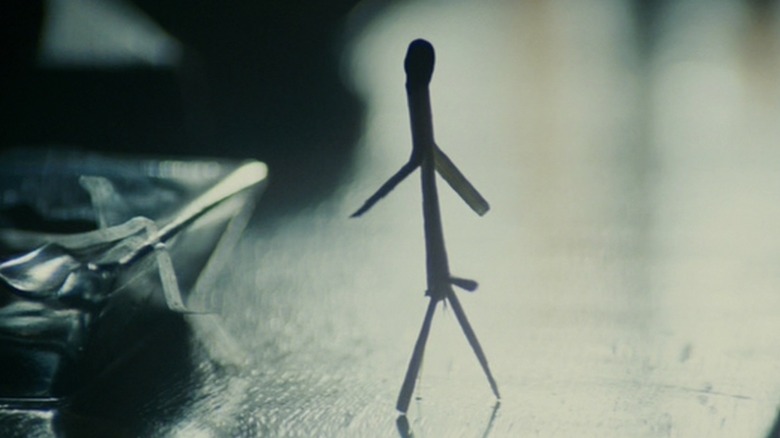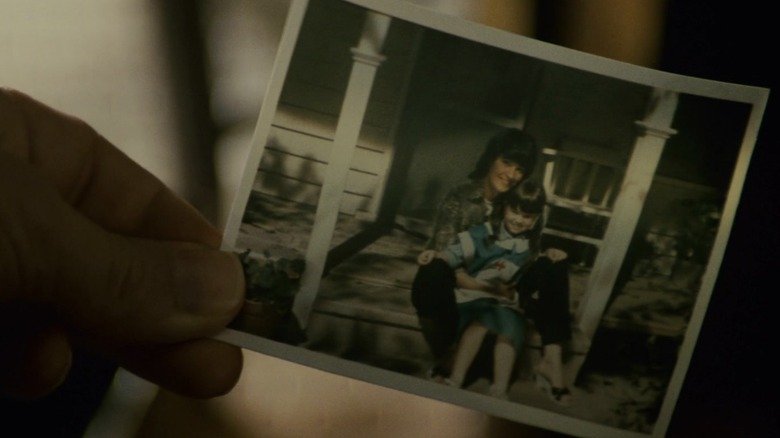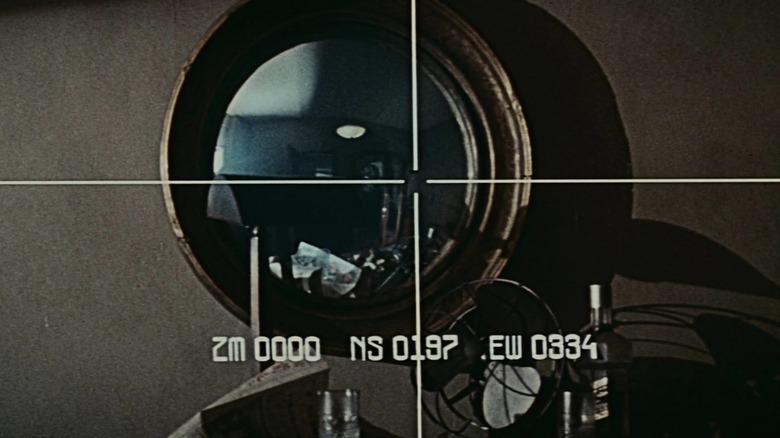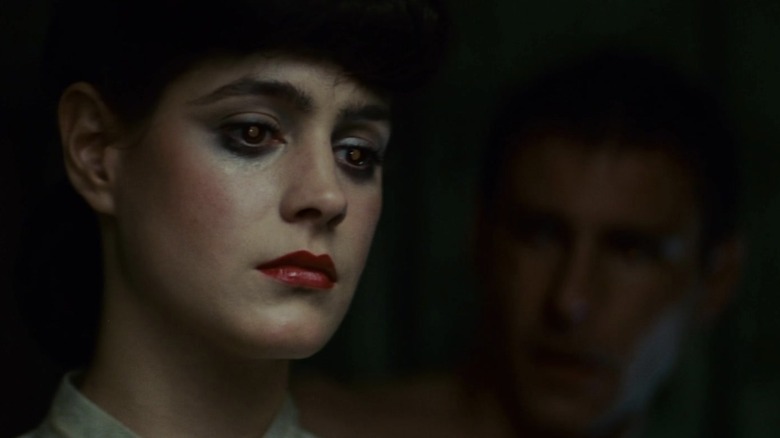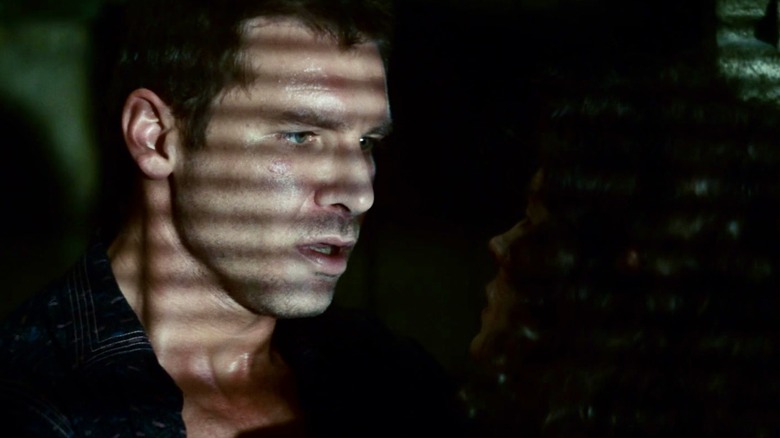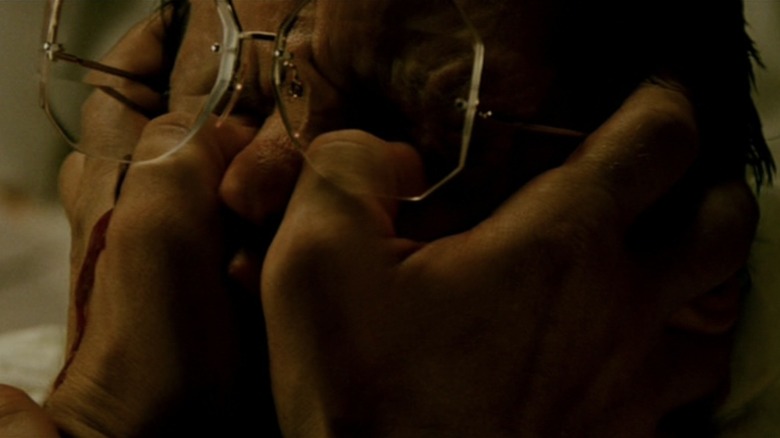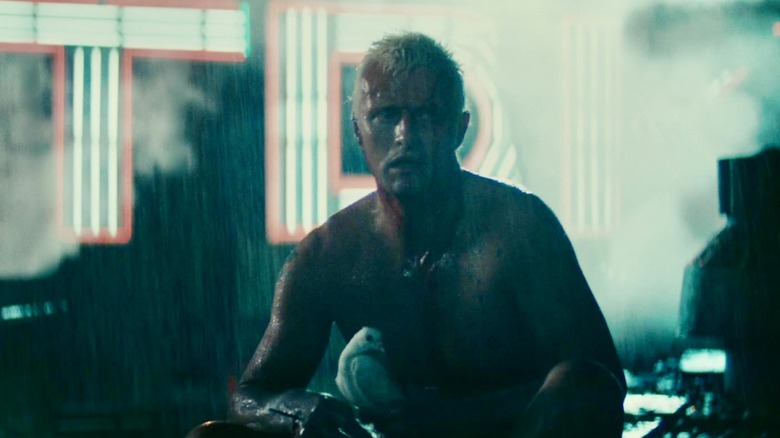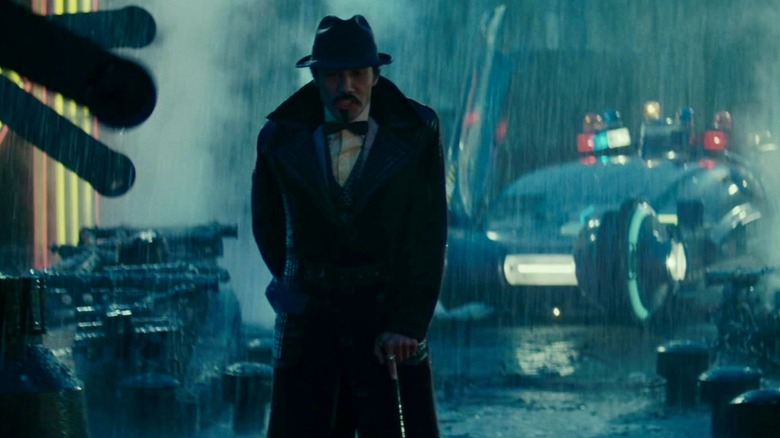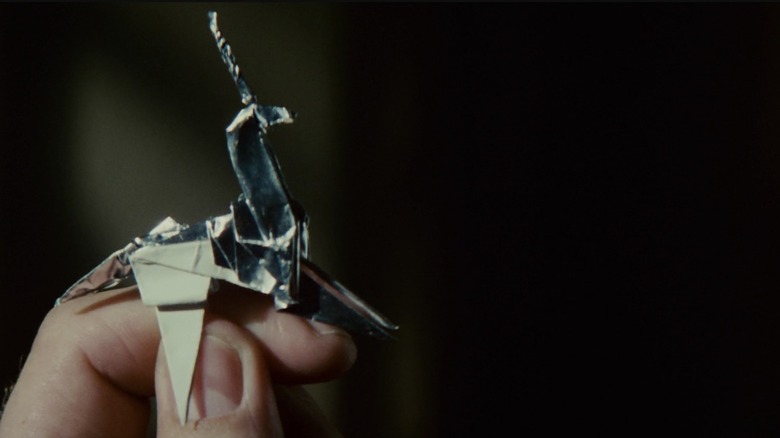Blade Runner's Most Confusing Moments Explained
Ridley Scott's sci-fi masterpiece "Blade Runner" was a box office bomb that became a cult favorite before being widely recognized as one of the foundational sci-fi films of the 20th century (per Den of Geek). This 1982 film adaptation of Philip K. Dick's 1968 novel "Do Androids Dream of Electric Sheep?" centers on Rick Deckard (Harrison Ford), a retired bounty hunter specializing in capturing humanlike androids called replicants. Deckard is forced back into service when six Nexus-6 replicants hijack an off-world ship, escaping to Earth, where they are illegal.
After two replicants die trying to break into Tyrell Corporation, Deckard is tasked with hunting down the remaining four and assessing another replicant at Tyrell Corporation. After meeting Rachael (Sean Young), an experimental model with implanted memories who believes she is human, Deckard has a crisis of conscience about hunting these beings who are "more human than human," and he questions his long-held assumptions about what it means to be human.
This ambiguous film has numerous versions, leading to some long-running debates about Deckard's true nature. As Den of Geek and many others have determined, Scott's 2007 "Blade Runner: The Final Cut" is the best version, capturing the filmmaker's vision for the project. It is the most readily available to stream or purchase, so we've based our analysis on this version of the film, and you can stream it on HBO Max. Stick with us as we demystify "Blade Runner" and its most confusing moments.
The eye motif
The close-up of an eyeball reflecting fire and the lights of Los Angeles is an establishing shot that director Ridley Scott said, in his commentary for "Blade Runner: The Final Cut," was an overt reference to the Orwellian all-seeing-eye, from George Orwell's novel "1984," establishing this film is set in a dystopian future. This image initiates the symbolic importance of eyes in this film.
Films are in part a visual experience, and Scott is a very visual storyteller. We all know eyes are "windows to the soul," but in "Blade Runner" the eyes are so much more. They are how our characters experience reality, how replicants are recognized, and how Roy Batty (Rutger Hauer) and Leon Kowalski (Brion James) find J.F. Sebastian (William Sanderson) the genetic scientist, who introduces Roy to Dr. Eldon Tyrell (Joe Turkel). Eyes move the plot along (via Shmoop).
This disembodied eye is a jarring and transfixing image, but since we never see who it is attached to, it is confusing. Still, this glittering eyeball alerts us to the importance of the eye motif in the film, suggesting it is symbolically relevant to the themes the film explores about what makes us human and the function that vision and memories have in forming our identity, who we are, and how we experience the world.
The origami chicken
As the camera pans over the futuristic buildings, we drift down to the streets of a dark and gritty, neon-splashed, and corporation-owned Los Angeles. Sitting reading a newspaper in this rainy and bleak vision of our not-so-distant future is Deckard, waiting to eat at a noodle bar. After Deckard is seated and orders his food, Gaff (Edward James Olmos) appears at Deckard's shoulder insisting Deckard come with him to see Captain Bryant (M. Emmet Walsh), the blade runner section chief.
Deckard, who is retired, tries turning down the assignment to hunt four dangerous Nexus-6 models. Deckard gets up to walk out of Bryant's office, but the camera focuses on an origami paper chicken Gaff made, insinuating Deckard is a coward. This is the nudge Deckard needs to accept the assignment, but it is also a visual cue that Gaff's origami creations are symbolically significant and something we should pay attention to while watching "Blade Runner."
Gaff is a man of few words; in these scenes, he doesn't even speak English to Deckard but uses the chef (Howie Lee) as a translator instead. Although Gaff doesn't have much to say, he speaks volumes through these visual cues that have been discussed and analyzed ad nauseam by fans on chat boards like Reddit, and by critics and academics. Regardless of who you listen to, these origami figures carry meaning because they are prominently featured.
Rachael and her owl's eyes
When Deckard flies in a spinner to the massive pyramid-shaped buildings of the Tyrell Corporation, where he was sent by Bryant to test another suspected replicant, he is greeted by Rachael, who asks Deckard, "Do you like our owl?" and reveals it to be synthetic. Dr. Tyrell, the creator of replicants, requests to see a negative test on a human before allowing a replicant to take Deckard's test. This is the first pause-worthy scene in "Blade Runner," where glowing pupils are revealed to be prominently associated with replicants.
We first see these glowing eyes flash in the owl and again when Rachael's eyes glow during the Voight-Kampff test that Deckard administers. The test is the screening process blade runners use, and it reveals, after an unusually large number of questions, Rachael is a replicant who thinks she is human. Deckard questions Tyrell, asking, "How can it not know what it is?" Tyrell explains Rachael is an experimental model with implanted memories, to give her more human-like responses and emotions.
These luminous pupils become associated with replicants as we see Roy, Leon, Pris (Daryl Hannah) and Rachael's eyes flash and glow when the light hits them just right. It is worth stating, according to Paul M. Sammon, author of "Future Noir," that the shine of these reflective replicant eyes is not visible in the film's world but is a nondiegetic visual cue for the audience to help differentiate between humans and replicants while watching the film (per Film School Rejects).
The matchstick man
After performing a Voight-Kampff test on Rachael at the Tyrell Corporation headquarters, Deckard and Gaff search the hotel room of the replicant who wounded the other blade runner, Holden (Morgan Paull), earlier in the film. As Deckard searches Leon's hotel room, opening drawers and looking in the bathroom, he takes a stack of photographs and plucks something out of the bathtub before putting it into a ziplock bag.
As he looks for clues to help him track down the four replicants, Gaff constructs an aroused man from a matchstick. Gaff's origami is obviously significant in "Blade Runner." Each piece he makes is briefly the focus of the camera and carries a hidden meaning, but the matchstick man might be one of the most enigmatic. Gaff's other origami pieces are animals with fairly obvious meanings, but this piece is of a man. Like the other origami pieces, fans have analyzed the matchstick man since "Blade Runner" came out in 1982.
One meaning of the matchstick man is that it is Gaff's way of taunting Deckard for his obvious attraction to Rachael, but this Reddit thread shares some other views, while Shmoop suggests the matchstick man is Gaff's first hint Deckard's humanity is in question. This ambiguous film invites the audience to engage with it, looking for clues, and this ambiguity is part of the reason "Blade Runner" is popular with audiences who enjoy thought-provoking films with nebulous questions about what makes us human.
The significance of photographs
When Deckard comes home from searching Leon's apartment, he is surprised to find Rachael waiting for him. She is upset and wants to talk to him about the results of the Voight-Kampff test because Dr. Tyrell won't talk to her. She tries to show him a photograph of her with her mother when she was a child as proof of her humanity. Deckard unkindly relays her childhood memories, telling Rachael these memories belong to Tyrell's niece and were implanted in Rachael.
Rachael drops her family photo on the floor before rushing out of Deckard's apartment in tears. Deckard looks at Rachael's photo and then Leon's photos while drinking. This scene impresses upon us the importance of photographs, not only to Rachael as proof of her humanity but also as evidence that replicants, like Leon, have feelings and can form attachments. Replicants document their brief lives as humans do, with photographs and memorabilia. These photos were precious to Leon, and he risked going back to his hotel room to get them, but he could not because Deckard and Gaff were there.
We see family photos scattered on Deckard's piano, making us wonder about Deckard's mysterious past and why he lives surrounded by images of his ancestors but is alone in the desolate ruins of Los Angeles. Rita Kempley with The Washington Post said, "Deckard gets out the family album, no longer sure of his own past," suggesting this is when Deckard first questions his own nature.
Enhancing Leon's photograph
Although zooming in and enhancing photographs and video has become a mainstay of police procedurals, when Deckard enhances one of Leon's photographs, searching for visual clues, the film doesn't explain immediately what Deckard is looking for. When Deckard finds a woman reflected in the photograph's mirror, we get a glimpse of why Deckard is the best blade runner, and it connects to the recurring importance of eyes in "Blade Runner." Deckard sees things others don't.
This image reveals a woman with a snake tattooed on her cheek and gives Deckard his next clue. We finally understand the significance of the item Deckard pulled out of the bathtub while searching Leon's hotel room when Deckard has the scale in the ziplock bag examined. Deckard learns that it is a high-quality manufactured snake scale and that a merchant nearby made it. This revelation leads Deckard to Zhora Salome (Joanna Cassidy) and the club where she dances with her snake.
This not only furthers the plot of the movie but also shows us how Deckard's mind works, helping us understand he is putting the pieces of a puzzle together, proving he is an excellent detective despite his disinterested demeanor. When Deckard retires Zhora, Captain Bryant calls Deckard "a goddamned one-man slaughterhouse," emphasizing Deckard's excellence as a blade runner. This sequence also reveals the emotional connection Leon and Zhora shared when we see Leon mourning her death apart from the crowd of onlookers.
Deckard's glowing eyes
After saving Deckard's life by shooting Leon, Rachael goes back to Deckard's apartment. While watching Deckard clean up from his scuffle with Leon, Rachael asks whether he would hunt her if she went north? Deckard looks at her thoughtfully before telling her he wouldn't, "but someone would." When Deckard passes behind Rachael, Deckard's eyes faintly glow in the background despite the shot's focus on Rachael's intensely glowing pupils. This is the first overt visual clue hinting Deckard may be a replicant, a commonly debated question among fans of the film.
The concept of implanted memories and the family photos at Deckard's apartment has already planted a seed of doubt in the audience, and this scene seems to nudge us further in that direction. Of course, the glowing eyes only happen for a moment and are out of focus, so it is possible this subtle visual cue may have slipped past many audience members or simply left them scratching their heads. Considering the symbolic importance of eyes in "Blade Runner," this visual cue is something we shouldn't disregard.
According to Film School Rejects, the filmmakers achieved this visual effect in-camera by using mirrors to reflect light into the actors' eyes. Those who believe Deckard is a human might argue Ford's eyes were picking up their residual glow from Young's eyes during filming and that this wasn't an intentional effect. If that were the case, why wouldn't the glow have been eliminated from the film in post-production or when Ridley Scott had it digitally remastered for the 2007 version of the film?
Deckard and Rachael's seduction scene
One scene that has aged poorly in "Blade Runner" and is jarring for viewers is the seduction scene between Deckard and Rachael in his apartment after she killed Leon. After kissing Rachael, seated at the piano bench, Rachael flees to the front door, where Deckard catches up with her, slamming the door before forcefully pushing her against the wall and kissing her. Deckard tells her what to say, and she relents.
Deckard's aggression is surprising, off-putting, and confusing, leaving some viewers, like film critic Eric Haywood, interpreting Rachael as a victim of sexual assault due to her murky consent and even whether a replicant is capable of consenting to sex or romance. Haywood even suggests this scene is evidence Deckard isn't the hero of the film at all. While others contend her reaction to his advances is evidence of her emotional confusion over learning she is a replicant and evidence she isn't sure she can trust her feelings, wondering if they are really hers, or belong to Tyrell's niece with whom she shares memories.
Rae Torres with Collider suggests this scene asks the audience to contemplate if replicants have agency and can ever truly consent while acknowledging this scene is most likely a reflection of outdated representations of passion and sexual aggression in men, especially noir heroes. Although this scene is questionable, it is representative of film noir tropes in "Blade Runner," setting up Deckard as an anti-hero. Regardless of your perspective on this scene, the ambiguity certainly encourages discussion and is emblematic of why this film is so intriguing.
If you or anyone you know has been a victim of sexual assault, help is available. Visit the Rape, Abuse & Incest National Network website or contact RAINN's National Helpline at 1-800-656-HOPE (4673).
Roy kills his maker
When J.F. Sebastian takes Roy to Tyrell's penthouse, it initially seems Roy is not there to harm Tyrell but to beg for more time than his predetermined four years, revealing why the replicants came to Earth. After Tyrell explains he cannot lengthen Roy's lifespan, Roy kills Tyrell and turns on J.F. Sebastian, killing him off-screen. Considering the symbolism of eyes in "Blade Runner," it is significant Roy kills Tyrell by gouging his eyes out and crushing his skull, suggesting that despite Tyrell's mental prowess and his godlike status, he is incapable of understanding: "His greed makes him blind to the fact that he is manufacturing slaves who are sentient beings capable of human emotion and intelligence," scholar Jane Shallcross argues in an essay on the film.
In a promotional interview for "Blade Runner 2049," Harrison Ford said, "They [replicants] can be assigned to a lifespan, to a horrible job, and then they can be retired according to the wishes of their maker. That presents certain moral issues." Issues that Tyrell, with his huge owl-like glasses, is incapable of seeing. Jane Shallcross contends, "The film suggests that one's ability and willingness to perceive systemic social inequality is the true measure of humanity." Roy murdering Tyrell and Sebastian is the departure point where we, the audience, see the world of "Blade Runner" from a replicant's perspective. One would assume these murders would make Roy monstrous in our eyes, but his desperation and grief have the opposite effect and instead humanize him.
Roy saves Deckard's life
After Tyrell and Sebastian's bodies are found, Deckard retires Pris at Sebastian's apartment. We see Roy's sorrow at Pris' death, and he pursues Deckard through the crumbling ruins of the building. Roy follows Deckard to the roof, where Deckard leaps to an adjacent building and nearly falls to his death. Instead of letting Deckard fall, Roy saves Deckard's life after saying, "Quite an experience to live in fear, isn't it? That's what it means to be a slave," echoing Leon's words to Deckard earlier in the film.
Roy is responsible for many deaths, as a soldier and a renegade, but in the end, Roy accepts his mortality, delivering an emotionally evocative monologue telling Deckard, "I've seen things you people wouldn't believe. Attack ships on fire off the shoulder of Orion. I watched C-beams glitter in the dark near the Tannhäuser Gate. All those moments will be lost in time, like tears in rain. Time to die." Reportedly, Rutger Hauer rewrote his lines, and they are some of the finest last words any character has in cinema history.
Some argue Roy saves Deckard because he recognizes something of himself in Deckard, suggesting Deckard is a replicant. Others suggest Roy ended his life nobly, expressing more empathy than anyone in the film, affirming his humanity and emotional depth. Some might believe Roy didn't want to die alone, needing someone to validate his experiences and humanity. The plethora of interpretations is one element that drives viewers back to "Blade Runner" — and to this scene — time and again. One thing is clear: Deckard sees Roy's humanity and identity are linked to his memories.
Gaff finds Deckard on the roof of the building
After Roy's death, Gaff appears on the roof of the building, throwing Deckard his gun and saying the most analyzed line in the film, "You've done a man's job, sir." Is this another hint Deckard isn't human, or is it Gaff's awkward way of saying "Good job"? Considering Gaff's contributions are subtle digs at Deckard through origami and enigmatic lines, like, "It's too bad she won't live. But then again, who does," it's a safe assumption Gaff is saying he knows about Deckard and Rachael's relationship and doesn't care.
In a promotional interview for "Blade Runner 2049," the belated sequel, director Denis Villeneuve said he thinks the question is more interesting than the answer. "I think it is interesting to see a character that is doubting about his own identity." After falling in love with Rachael and seeing Roy's depth of feeling, it is clear Deckard can't continue believing there is a hard line between human and replicant.
Although it is unclear if Deckard questions his own humanity, it is obvious his experiences during this case have opened his eyes and made him reconsider his black-and-white ideas about what makes us human. Deckard is seeing the world through fresh eyes and is coming to understand that replicants have feelings; they live and love and die, just like humans do. Now that his eyes have been opened, he is finished as a blade runner, and there is no going back.
The origami unicorn
When Deckard and Rachael leave his apartment to run away together at the end of "Blade Runner," Deckard finds a foil unicorn Gaff left outside his door. Much has been made of this scene and the symbolism of the unicorn. How it is interpreted depends entirely upon which version of the film you watch.
In the theatrical version, Ted Greenwald with Wired suggests, the unicorn is confirmation Gaff is letting Rachael live. Deckard's voiceover during the happy ending confirms she doesn't have a four-year lifespan (via Den of Geek). This interpretation agrees with Harrison Ford's belief that Deckard is a human, which was the case in Philip K. Dick's novel (per Auralcrave). Ford said (via Polygon), "That was the main area of contention between Ridley and myself at the time. I thought the audience deserved one human being on the screen that they could establish an emotional relationship with." This reading also reflects mythological associations between unicorns and purity, equating the symbolism of the unicorn with Rachael.
Those of us who watched the later versions interpret the unicorn as Gaff's confirmation Deckard is a replicant, linking the origami unicorn with Deckard's reverie of a unicorn earlier in the film. This interpretation is the one Scott favors, telling Wired, "That's the whole point of Gaff. [...] He doesn't like Deckard, and we don't really know why. [...] The unicorn in Deckard's daydream tells me that Deckard wouldn't normally talk about such a thing to anyone. If Gaff knew about that, it's Gaff's message to say, 'I've read your file, mate.'" But with "Blade Runner" and its sequel both reluctant to address many of these questions, they will no doubt keep fans revisiting Scott's original film.
